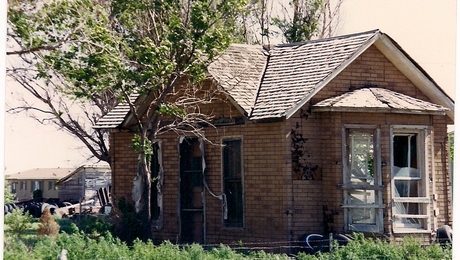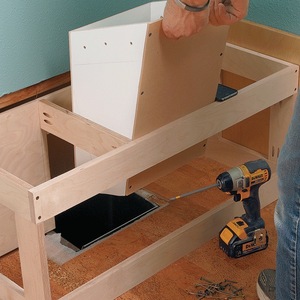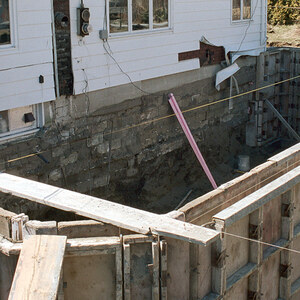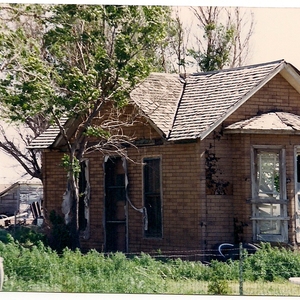1970’s construction; steel boxes, wires in conduit, no separate ground wires.
Two outlet circuits in kitchen; circuit A with two outlets, one on each side of the sink; circuit B with one outlet 5′ from sink. They are on adjacent 20A breakers in the panel. Neither has a GFCI. Outlets are on pigtails. Both test properly wired using three-prong tester – two amber lights.
I installed a GFCI in circuit A with its dependent outlet on the load terminals; tested ok from both outlets.
I installed a GFCI in circuit B on the same pigtails as the old outlet; nothing on Load terminals. There are a hot, two lines branching out of the box into other conduits, and the pigtail all wire nutted together. The pigtail white and companion whites to the hot wires are wire nutted together. As soon as I turned the breaker back on, GFCI A tripped and could not be reset; GFCI B remained tripped and could not be reset. There was nothing plugged into either GFCI nor the dependent outlet on A.
When circuit breaker A is off, circuit B GFCI works normally. When breaker B is off, circuit A GFCI works normally.
All the outlets are Decora style, and there are GFCI’s in the bathrooms, so I’m guessing whoever upgraded from the original outlets found the same problem and couldn’t solve it so they just put standard outlets instead of GFCI’s in the Kitchen.
Anyone have an idea what’s haunting these circuits?


















Replies
I think that they share the same neutral phase. Do the two hots give you 220volts or nothing?
You should get 220. If you don't get 220 the hots are both feeding the neutral in the same phase and tripping each other.
"If you don't get 220 the
"If you don't get 220 the hots are both feeding the neutral in the same phase and tripping each other."
I don't understand. By that logic, shouldn't any two GFIs in the house, if they are on the same phase trip each other? If there are more than two GFIs in the house, at least two of them must be on the same phase.
I would start by disconnecting the wires on the load side of A. See if that helps.
You are sure you are on the LINE side of the GFCI with the feed???
BigBill is partially correct. The GFCI outlets won't work on a shared neutral. One way that will usually indicate this is a red hot wire on one circuit. GFCI outlets will trip when there is a very slight difference in the currents on the hot and neutral.
You can't share the neutral on the load side but it can't see the line side.
It really depends on how old the GFCIs are, whether they work when miswired and the new ones immediately trip. Isn't that the problem?
I installed new GFIs and they both work correctly as long as the other one's breaker is off, but the first one trips as soon as the second breaker is turned on.
That brings up another wrinkle to this. New GFIs come out of the box in tripped condition - you have to reset them after installing. When I installed GFI B, GFI A tripped as soon as I turned breaker B back on. I had not yet reset GFI B and in fact GFI B could not be reset, not even for a fraction of a second as with GFI A. It was as if GFI B reset button was stuck.
I know it was not an out-of-box failure, because with circuit breaker A off, GFI B worked normally.
My guess is that somewhere circuits A and B have their HOTS cross-wired, so that either breaker energizes the circuit. GFCI B is downstream from GFCI A, but breaker B feeds into the link between the two.
Trace the load wires coming out of GFCI A. Likely they lead to some other outlet, and from there to GFCI B.
"My guess is that somewhere
"My guess is that somewhere circuits A and B have their HOTS cross-wired, so that either breaker energizes the circuit"
If that were the case, I could not have cut power to one or the other circuit to install the GFCIs.
There is only one pair of load wires on GFCI A, a white/black pair exiting into a conduit at the bottom of the box and there is one white/black pair entering the bottom of the box of the dependent outlet and they go dead when GFCI A trips; that outlet is end-of-line, so there is nothing downstream from it. Whatever connections there may be in other boxes, perhaps behind the hard-wired trash compacter, I don't know.
I've referred an electrician friend to the HO. Perhaps I'll hear back one day just what was wrong with that wiring.